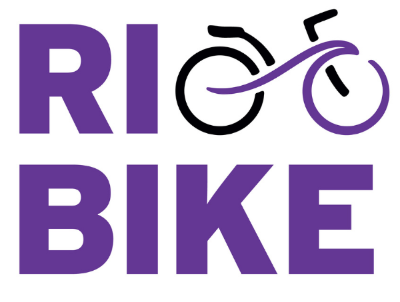Thanks to Sue Barker, who sent this story.
After years of official neglect, leaders in Miami are answering pleas from cyclists to civilize the city’s hazardous, car-dominated streets.
BY ANDRES VIGLUCCI
aviglucci@MiamiHerald.com
Miami’s long-downtrodden but growing community of bicyclists is reaping a sudden bonanza. Miles of new bike lanes, and plans for more. A new monthly, family-friendly bike festival downtown. And a clutch of bike-friendly proposals designed to promote cycling for recreation and commuting.
Miami-Dade County on Saturday will formally inaugurate dedicated bike lanes along the full length of the Rickenbacker Causeway by closing half the roadway for the morning and letting cyclists, roller-bladers and pedestrians have the run of it.
The following weekend, on Jan. 18, the city of Miami will host the third, expanded edition of Bike Miami Days, the monthly effort by the administration of Mayor Manny Diaz to promote urban fun and safe cycling by closing off streets in downtown and the Brickell area in hopeful emulation of the famed Ciclovía in Bogotá.
This time, the event will extend from Flagler Street to Mary Brickell Village and the Miami River waterfront and Lummus Park, with bands, in-street dining, and free bike valet parking and loaner bikes along the route.
And that’s not all: Miami-Dade Commissioner Carlos Gimenez is sponsoring an ordinance, patterned after regulations in Portland and other famously bike-friendly cities, that would require bike racks in all new public and private commercial developments in unincorporated areas, plus encourage installation of showers and lockers for bike commuters.
The county measure would come atop a new city bike plan, recently approved by the Commission, that calls for new bicycle lanes along major corridors like the eastern portion of Coral Way, designation of other safe routes across city neighborhoods, and more bike parking, racks and other bike facilities.
Also in the works: a city plan to transform the closed-off North Point of Virginia Key into mountain-bike trails.
”There’s a lot of big momentum,” said Brett Bibeau, chairman of the county’s Bicycle/Pedestrian Advisory Committee. “There is significant progress being made.”
BEHIND THE TIMES
If anything, Miami is coming late to the pedal party. The popularity of cycling is rising sharply across the country, and bike lanes, bike parking and other forms of ”bicycle infrastructure” are increasingly seen as essential urban amenities.
Cities from New York to Chicago to San Francisco have installed miles of dedicated bike lanes, instituted bicycle days in which major streets are closed to cars, and launched programs to promote bike commuting and safety.
Broward County is in many respects well ahead of Miami-Dade. It has about 200 miles of bike-friendly roadways with dedicated lanes, wide shoulders and other features designed to accommodate bikes, and a 30-mile ”greenway” system of paths is scheduled for completion within the next two years, said the county’s bicycle/pedestrian coordinator, Mark Horowitz. A county map, now in its fourth edition, ranks roads by suitability for bikes.
”We’ve been doing this for a while, and we’re now at the point where we’re trying to fill in gaps,” Horowitz said.
For the past several years, Broward County’s parks department has also sponsored Bike Month, with dozens of bicycle-related events during March like bike rodeos for kids and family rides like the Surfside trek along Hollywood’s Broadwalk.
GETTING STARTED
Cycling advocates have long wondered why local authorities in Miami, with its ideally flat terrain and year-round warm weather, did almost nothing to promote bike use or safety. Last year, Bicycling magazine named Miami one of the nation’s three worst cities for cyclists.
Belatedly but surely, though, cycling has become a favorite cause of politicians and municipal officials eager to civilize the city’s hazardous, car-dominated streets and burnish their ”green” credentials.
”It’s part of the new urban fabric of Miami,” Diaz said. “As the city continues to mature, you will see more involvement in cycling by people and government. There is no reason why Miami shouldn’t be among the great bike-friendly cities in the world. Over time, it will be.”
Gimenez, a key backer of the Rickenbacker lanes, made the project a priority after he was hit by a car while riding his bike on the causeway shoulder — a popular route used by hundreds of recreational cyclists on weekends — shortly after his 2004 election.
Gimenez suffered only road rash, but the plan received more impetus after cyclist Omar Otaola was struck and killed by a delivery truck as he tried to maneuver a poorly marked stretch of roadway near the Bear Cut bridge in February 2006.
Gimenez also successfully lobbied for a new state law that requires motorists to stay at least three feet from cyclists when passing them on the road.
ON THE CAUSEWAY
When the county’s public works department launched a total resurfacing of the causeway, it added designated lanes — with bikes sharing the roadway — along both inbound and outbound lanes, work that was finished over the past few months. (A paved path off the roadway remains in use for both cyclists and pedestrians.)
Those new road lanes join older bike lanes stretching along Crandon Boulevard through Key Biscayne all the way to the entrance of Cape Florida State Park at the island’s end.
”I think the county has done a very good job to make that Rickenbacker ride a lot better and much safer,” Gimenez said.
While the Rickenbacker lanes are almost purely recreational, Gimenez’s proposed ordinance is geared to increasing the appeal of bike commuting by addressing the almost complete lack of bike racks in public and commercial buildings. Showers and lockers would make cycling an option for even more people, Gimenez said.
Bibeau, the cycling advocate, said he commutes by bike from his home in Shenandoah to his office near the Miami River only occasionally because the workplace lacks showers.
”If I have to go to the City Commission in a suit, right now it’s not really an option,” Bibeau said.
